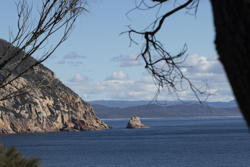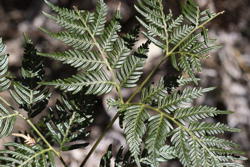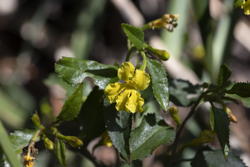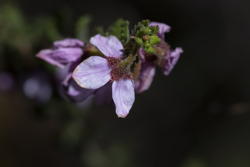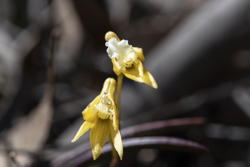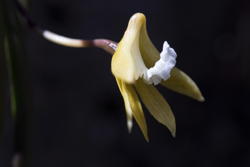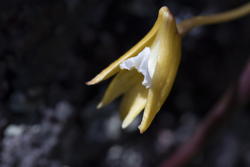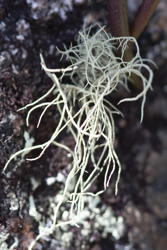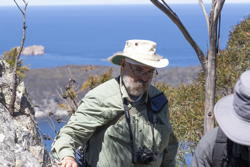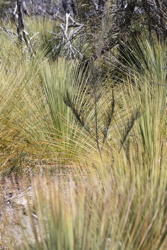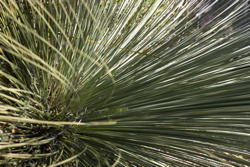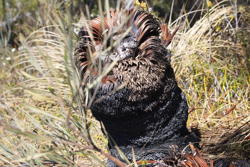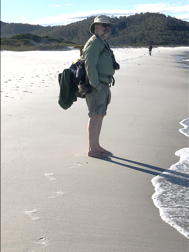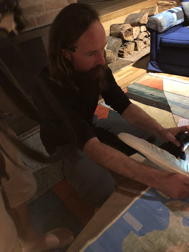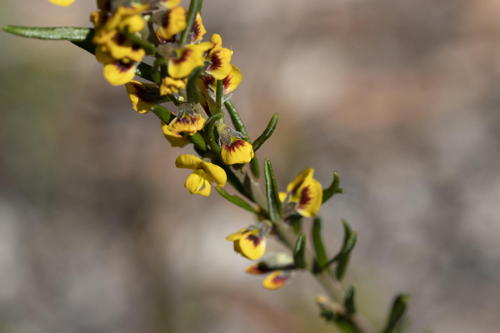
|
|
One of the tiny wildflowers we saw this day: Golden
Pea, Aotus
ericoides (you can see a bigger version of this image, too). |
Sunday, November 11, 2018
I specify the year above, because today was the hundredth anniversary of the end of what was called The Great War, until the war of 1939-45 came; after that greater conflagration, the earlier one got to be called World War I. My understanding has always been that the fighting men of the Commonwealth were thrown into the very worst of the battles during WWI, and suffered tremendously. And I was surprised to notice that throughout this day nobody mentioned the date and its significance.
But we were completely cut off from contact with the outside world: no internet, no telephone, no television, no radio. There were commemorations of the date in the cities of Australia, as we discovered when we got back to civilization, but here on the Freycinet, we were concerned only with our daily business.
For today’s walk, I resolved to burden myself as lightly as I could, with only one lens for the camera. We had been told that there would be plenty of wild flowers to be seen, the lens I chose was the macro. It was a good choice, since the wild flowers were all rather small, and for the most part not widespread.
Today’s jaunt itself started out with a trip by van to a point in the bush where we had a short walk to a beach on the east coast of the peninsula, and I guess that’s where the first picture, to the right, was taken. Mark reports that the islet there is Boot Rock. Most of the photos are without any information from my journal that would help in their description; and most of the identifications are cribbed from Mark’s page, too.
I know virtually nothing about ferns, and wish I had stopped to look more closely at the one depicted in the upper right of the block here. I tried to find it in an online list, and I suppose it’s Australian Bracken, but the pictures on line don’t exactly compare.
The snail at the lower right appeared at about shoulder height—it wasn’t a tiny one, either. I believe that this was the only land snail that I saw in the time we were in Tasmania.
In the block to the left, I really liked the little purple flowers in the upper corner, and the close-up view as well as the big image show a wonderful effect reminiscent of the granulation that’s seen in some ancient jewelry. I guess it’s droplets of sap at the ends of the tiny hairs covering the plant’s surface.
The other three images in the block show rock orchids, Dendrobium striolatum. It’s a tiny flower, made me really glad that I had come out with my macro lens. The plant just seems to be there on the face of the big rock, living what looked to me like a very precarious existence. We used one of these images for our Christmas card in December 2018.
We climbed, and sometimes looked out toward the ocean, as Mark had been doing before returning to the track, shown in the the picture to the right.
Toward the summit of the track, we had a nice lunch, which Isaac and James had carried and had run up before us to spread out for our refreshment. Good cold cuts and vegetables that we could wrap in flour tortillas.
I was fascinated by the Australian grass trees (Xanthorrhea sp., probably X. australis), which I unfortunately couldn’t get good photographs of because the lens I brought was not good for broad shots. But I did as well as I could: the shot at the left shows a few very young plants, not big enough yet to be called “tree”, while the two at the right show the thickness of the growth of a mature grass tree, and the stump of a tree that was almost certainly killed by Phytophthora. As you see from the stump, this “tree” is not like any tree that you know. Look closely and you see that its internal structure is not even like that of a palm tree, though that is the first thing I thought of when I saw this one and the many other stumps in today’s walk.
My journal goes on at great length about the difficulties I had on this walk, but I’ll skip the tediousness. From the high point of the track, we descended relatively gradually, to come to the beach. Barefoot, we walked northward a good way till we hit the place where we could turn up to the Lodge.
Let me quote from the journal here: «We had drinks then at the Lodge, and afterwards, I went right back for a shower, blessed shower. The water here was most satisfactorily hot, and I luxuriated.
«Dinner was a great big hunk of beef, more than I needed, but all in all, excellent, as all Holly and Daniel’s meals have been.
«All our dinners have been followed by fine conversation, in which Marianne has been the spark plug. I think that she had the greatest effect in bringing spice and a different viewpoint to the group.»
As was the practice on previous nights, we all gathered in the lounge to hear a description of what we’d be doing the next day. Read all about that adventure on the next page.
